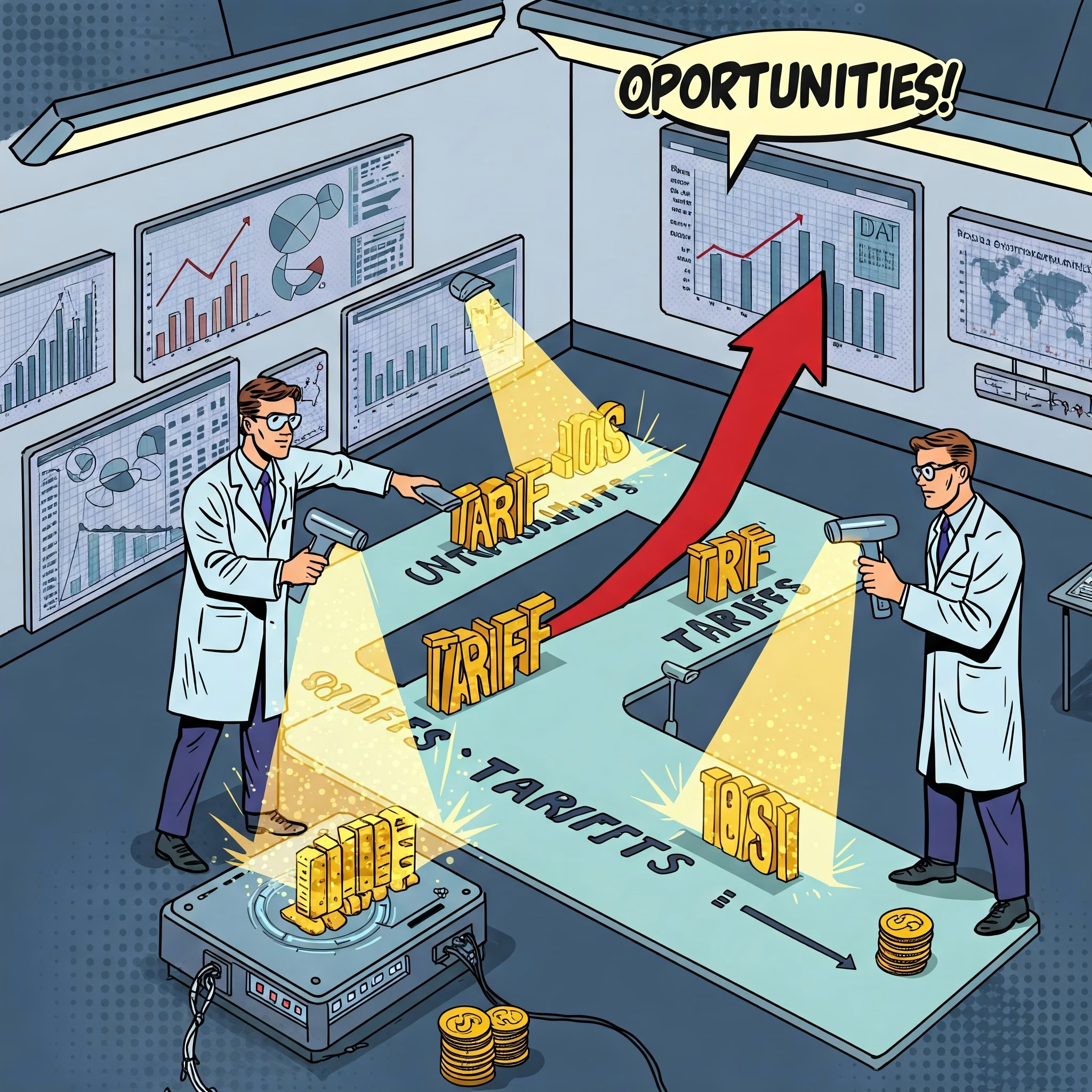Volatility is high, caution reigns.
Get a grip on the opportunities with the2Guys’ Growth Velocity operational management
As of May 2025, the tariffs imposed by the Trump administration in April 2025 primarily target physical goods imported into the United States, with a baseline 10% tariff on all imports and an elevated 20% tariff specifically on goods from the European Union.
These measures are part of a broader strategy to address trade imbalances.
For Portfolio Companies’ Investors, waiting for tariffs’ clarity is a luxury you can’t afford. Given the evolving nature of trade policies and the potential for new measures to be introduced, European SaaS providers should stay informed about developments in U.S. trade regulations.
The intrinsic value of your portfolio demands proactive action, not waiting for clarity.
the2Guys’ Growth Velocity methodology – GPA, GPQ, and GAP – provides the framework to understand the impact of Tariffs on your companies’ competitive edge, and actively seize the emerging opportunities.
GROWTH POTENTIAL ANALYSIS (GPA): ASSESSING THE COMPETITIVE LANDSCAPE UNDER TARIFFS
>Trick 1: competitive advantage vulnerability scan (data-driven risk assessment – estimated efficiency improvement: 10-15%): Leverage GPA’s deep data analysis (market, product, competition) to pinpoint how Tariffs on adjacent technologies or hardware dependencies might indirectly impact your companies’ competitive advantages. Analyze potential cost increases for complementary tools, shifts in user adoption of related hardware, or competitor vulnerabilities due to tariffed infrastructure.
Control & Action: We will quantify these indirect risks by analyzing market trends in adjacent sectors, mapping potential cost pressures on your companies’ tech stack or user base, and identifying competitor weaknesses exposed by Tariffs.
>Trick 2: domestic market share upside analysis (numbers-backed localization – estimated efficiency improvement:10-12%): While direct Tariffs are less common, GPA can identify opportunities to increase domestic market share if Tariffs hinder international competitors’ expansion or increase their operational costs within your target market. Analyze market data, competitor pricing strategies, and domestic user preferences to highlight under-served segments.
Control & Action: We will quantify the potential for domestic market share growth by analyzing competitor pricing adjustments, tracking domestic user adoption trends, and identifying segments where a localized solution offers a cost or performance advantage.
GROWTH POTENTIAL QUADRANT (GPQ): DEFINING STRATEGIC POSTURE FOR RESILIENCE
>Trick 3: feature differentiation & value enhancement (strategic upselling – estimated efficiency improvement: 18-20%): Use GPQ’s market maturity benchmarking to identify opportunities to enhance your offerings with features that provide unique value, potentially offsetting any indirect tariff-related cost increases for users. Focus on features that drive stickiness and reduce user price sensitivity.
Control & Action: We will map your companies’ GPQ position and identify strategic feature enhancements that align with market needs and offer a compelling value proposition, tracking user adoption of these new features and their impact on churn rates.
>Trick 4: strategic partnerships & integrations (collaborative ecosystem – estimated efficiency improvement: 15-20%): GPQ’s competitive analysis can highlight potential strategic partnerships with domestic or non-tariff-affected international sales and technology partners to create a more resilient ecosystem for your companies. This can mitigate risks associated with Tariffs on specific technologies.
Control & Action: We will identify and evaluate potential sales and technology partnerships based on market synergy and tariff resilience, tracking the impact of these integrations on user acquisition and retention.
GROWTH ACTIVATION PLAN (GAP): PRESSURE TESTING GROWTH SCENARIOS>Trick 5: scenario-based pricing & packaging models (data-driven flexibility – estimated efficiency improvement: 15-20%): GAP’s Go-to-Market excellence will involve developing multiple pricing and packaging scenarios that account for potential tariff-induced cost fluctuations in adjacent technologies or shifts in competitor pricing. Pressure test these scenarios against different market responses.
Control & Action: We will build financial models simulating the impact of various tariff scenarios on your companies’ profitability under different pricing strategies, allowing for proactive adjustments and informed decision-making.
>Trick 6: agile Sales & Marketing messaging (value-focused communication – estimated efficiency improvement: 18-22%): GAP’s targeted marketing and sales messaging will emphasize the long-term value, ROI, and efficiency gains offered by your solutions, potentially mitigating concerns about indirect cost increases due to Tariffs on related technologies. Focus on communicating the core benefits that remain constant regardless of trade fluctuations.
Control & Action: We will refine your ICPs and buyer personas to understand their sensitivity to potential indirect tariff impacts and craft compelling messaging that reinforces the fundamental value proposition of your offerings, tracking message effectiveness through conversion rates and lead quality.
WAITING FOR CLARITY IS NOT A STRATEGY.
The 2Guys’ Growth Velocity methodology empowers you to proactively assess, strategize, and execute a resilient growth plan for your portfolio companies amidst tariff uncertainty.
We provide the data-driven insights to understand the risks and the operational frameworks to seize the opportunities.
Let’s pressure test your options and build a future-proof growth trajectory.
Book a 15 minutes meeting, we can probably clear out the way for you
www.the2guys.nl
